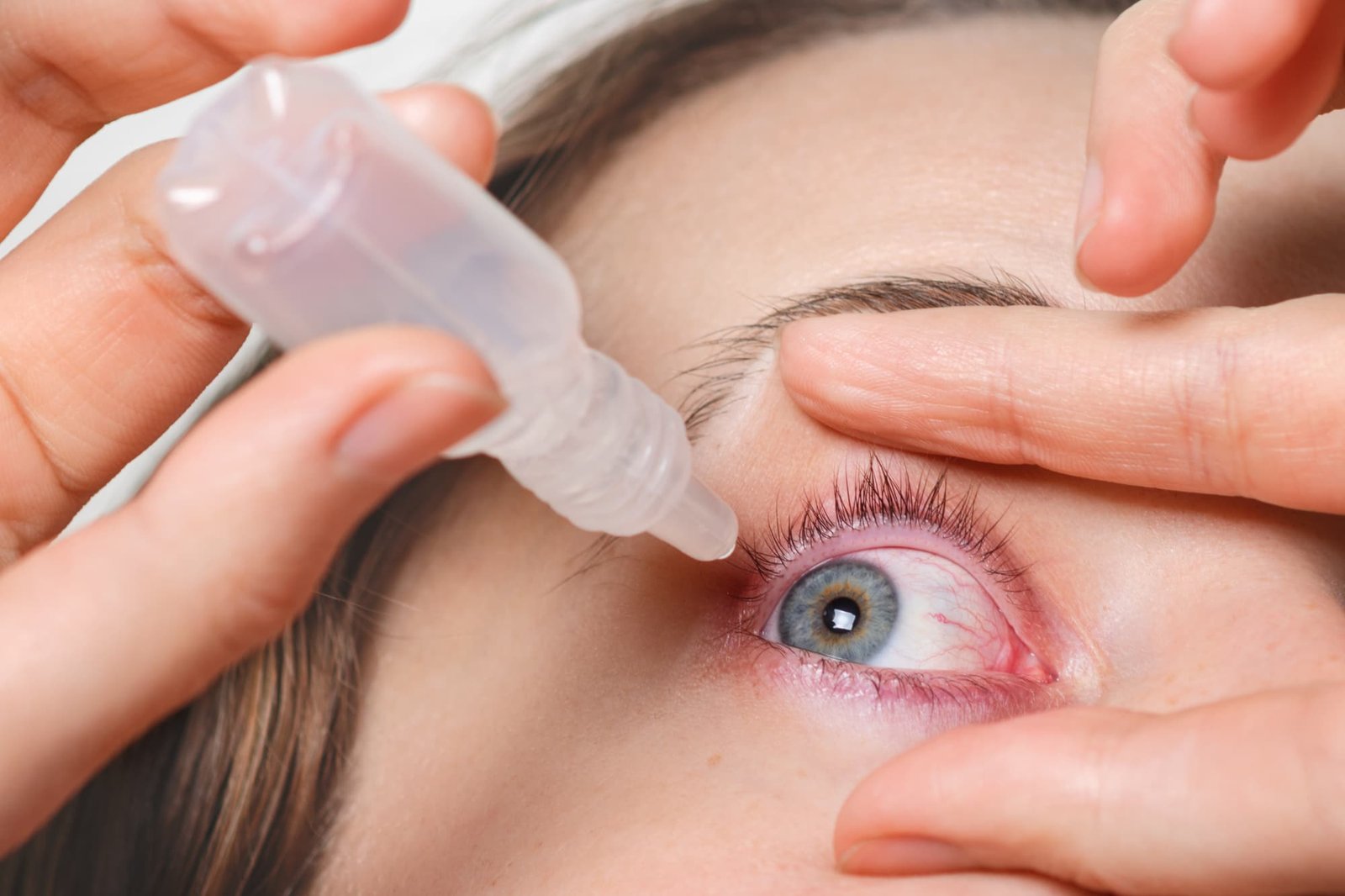NDP EyeCare | Dr. N D Patil | Dr. Gaurav Patil | Cataract | Glaucoma | Oculoplasty | LASIK
Our Latest Equipment is Best to keep your Vision perfect like Eagle!

Dry Eye Treatment in Nagpur – Expert Care by Dr. N. D. Patil
Understanding Dry Eye Syndrome
Dry eye syndrome occurs when your eyes fail to produce enough tears or when tears evaporate too quickly. Tears are essential because they lubricate, protect, and nourish the surface of the eye. When tear production reduces or tear quality weakens, the eyes feel gritty, irritated, or uncomfortable.
Dr. Patil explains that dry eyes are not just about discomfort—they can lead to blurred vision, increased risk of infection, and corneal damage if left untreated. Therefore, early diagnosis and proper treatment become crucial for maintaining healthy vision.
Causes of Dry Eyes
Several factors can contribute to dry eye syndrome. Dr. Patil categorizes them into internal and external causes to help patients understand the condition better.
Internal Causes:
Aging: Tear production naturally decreases as we grow older.
Hormonal changes: Women going through menopause often experience dry eyes due to hormonal imbalance.
Autoimmune diseases: Conditions like rheumatoid arthritis, lupus, or Sjögren’s syndrome affect tear glands.
Eyelid problems: Poor eyelid closure prevents proper tear spreading.
External Causes:
Screen exposure: Prolonged use of computers or phones reduces blinking frequency.
Environmental factors: Air pollution, dry air, or wind accelerate tear evaporation.
Contact lens use: Extended wear may disturb the tear film.
Medications: Antihistamines, antidepressants, and some blood pressure medicines can reduce tear production.
By identifying these causes early, Dr. Patil customizes treatment plans that not only relieve symptoms but also target the underlying problem.
Symptoms of Dry Eyes
Patients visiting Dr. Patil often report one or more of the following symptoms:
Dryness, grittiness, or burning sensation in the eyes.
Redness and irritation.
Blurred or fluctuating vision.
Excessive tearing (as a reflex to dryness).
Eye fatigue after reading or screen work.
Sensitivity to light (photophobia).
Feeling like there is something in the eye.
Since these symptoms overlap with other eye problems, proper examination by an experienced ophthalmologist like Dr. Patil is essential for accurate diagnosis.
Diagnosis – How Dr. Patil Evaluates Dry Eyes
Dr. N. D. Patil believes that accurate diagnosis forms the foundation for effective treatment. Therefore, he conducts a thorough eye examination to assess tear production, tear film quality, and corneal health.
Diagnostic Methods Include:
Slit-lamp examination: Helps evaluate the surface of the cornea and conjunctiva.
Tear breakup time test (TBUT): Measures how quickly tears evaporate from the eye surface.
Schirmer’s test: Measures tear production using a small filter paper strip.
Ocular surface staining: Uses dyes like fluorescein to identify damage to the corneal surface.
Meibomian gland evaluation: Checks the oil glands in the eyelids that prevent tear evaporation.
With these tests, Dr. Patil identifies whether the dryness results from reduced tear quantity, poor tear quality, or both.
Treatment Options for Dry Eye Syndrome
After diagnosis, Dr. Patil tailors treatment based on the type and severity of the condition. His goal is to restore comfort, protect the eye surface, and improve tear stability.
1. Artificial Tears and Lubricating Drops
For mild cases, Dr. Patil recommends preservative-free artificial tears. These drops supplement the natural tear film and provide instant relief from dryness and irritation.
2. Anti-inflammatory Eye Drops
When inflammation of the tear glands contributes to dryness, Dr. Patil prescribes medicated eye drops containing cyclosporine or lifitegrast to reduce inflammation and enhance tear production.
3. Warm Compress and Eyelid Hygiene
Patients with blocked meibomian glands benefit from warm compress therapy. This helps melt the oil secretions, allowing a healthier tear film. Regular eyelid cleaning also prevents bacterial buildup and improves gland function.
4. Punctal Plugs
For moderate to severe cases, Dr. Patil may use punctal plugs—tiny devices inserted into the tear drainage ducts. These plugs help retain natural tears on the eye surface for longer, reducing dryness.
5. Omega-3 Supplements and Nutrition
Dr. Patil encourages patients to improve diet and take omega-3 fatty acid supplements under guidance. These nutrients enhance tear quality and reduce inflammation naturally.
6. Environmental Adjustments
He advises adjusting home and office environments—like using humidifiers, taking screen breaks, and avoiding direct air from fans or AC vents—to reduce tear evaporation.
7. Advanced Therapies
For patients with severe or chronic dry eye disease, Dr. Patil offers advanced treatments such as autologous serum eye drops, intense pulsed light (IPL) therapy, and meibomian gland expression. These methods target root causes and help restore long-term comfort.
Lifestyle Modifications for Managing Dry Eyes
Besides medical treatment, simple lifestyle changes play an important role in controlling symptoms. Dr. Patil suggests:
Following the 20-20-20 rule: Every 20 minutes of screen use, look at an object 20 feet away for 20 seconds.
Blinking consciously while reading or using devices.
Staying hydrated throughout the day.
Limiting smoking and alcohol consumption.
Using protective eyewear outdoors to reduce exposure to wind and dust.
Maintaining regular follow-ups for eye evaluation.
With these habits, many patients experience lasting relief and improved vision comfort.
Book an Appointment Today
If you are searching for the best glaucoma specialist in Nagpur, look no further than Dr. N.D. Patil at the Centre of Advanced Eye Care. Early intervention is the key to preserving your sight. So, don’t wait until it’s too late—schedule your consultation today and take the first step toward protecting your vision.

